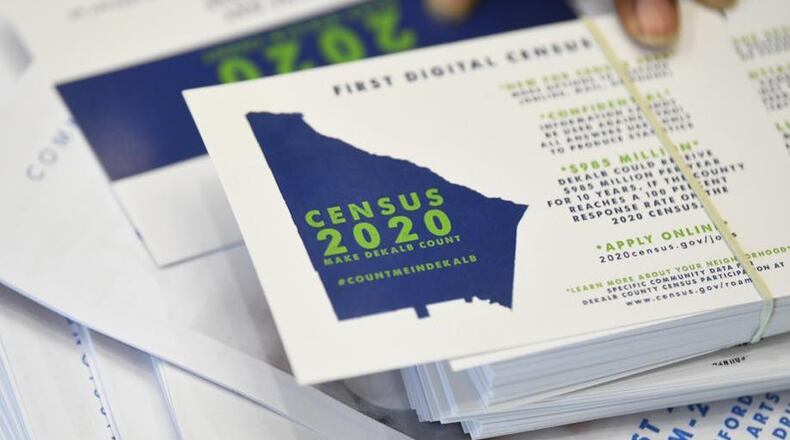Thirty three percent of Americans have already responded, according to the U.S. Census Bureau.
In Ohio, nearly 36% of households have responded, including 19% in Dayton. About 30% of Americans have responded online. Nearly 31% of Montgomery County residents have responded online.
How to complete the 2020 Census
In light of the coronavirus, the Census Bureau is encouraging residents to fill out the census online, by phone or by mailing in a questionnaire.
Nikol Miller, the chairwoman of the Dayton-Montgomery County Complete Count Committee, said at least half of the county will get mailed questionnaires automatically.
But if someone hasn’t responded by April 8, the Census Bureau will mail them a questionnaire.
By now, households should have receieved a postcard in the mail from the Census Bureau with a 12-digit census ID that will allow them to log on to my2020census.gov and complete the 2020 Census. Individuals can also complete the census online without the 12-digit ID using their address.
To respond via phone, call (844) 330-2020. Households can also complete the census by phone without the 12-digit census ID, Miller said.
RELATED: 2020 Census: ‘We need to count everyone once and only once’
How coronavirus is impacting the 2020 Census
The Census Bureau will also be delaying sending census takers out to follow up with households until later in the summer.
Census takers won’t be sent out until May 28 at the earliest, Miller said. The Census Bureau is taking this step to help protect the health and safety of the American public, its employees and temporary census takers.
The Census Bureau has also decided to eliminate personal visits for the foreseeable future. Where it is feasible, field workers will call survey participants and seek to collect the necessary information over the phone.
Phone calls from the Census Bureau will be brief and they will not ask about financial information or Social Security numbers. The purpose of these calls is to verify information given in a household’s response will stay private.
Dayton’s Regional Transit Authority (RTA) does still plan to move forward with the free WiFi bus, which will enable riders to fill out the census on their smart phones while riding the bus. That bus will roll out on April 1 and circulate on different routes through the summer, Miller said. Miller is also the community relations manager for RTA.
Due to coronavirus closures, it was not certain if RTA buses would be in operation.
“As with most things, we are playing this day-by-day,” Miller said.
Miller said there were rumors going around that only people who filled out the 2020 Census would get a stimulus check from the federal government.
“That is absolutely not true,” she said, noting that all information collected is kept private.
RELATED: Census 2020: One-third of Ohioans respond so far; Oakwood at top in Miami Valley
How the census impacts U.S. life
Ohio lost congressional representation after the 2010 Census count, Miller said.
Ohio lost two seats in the U.S. House of Representatives, where Texas gained four seats.
“It’s not so much based population loss as it is the rate of growth in other parts of the country,” Miller said. “The trend in recent years has been growth in the south and southwest states.”
From the 2000 Census to the 2010 Census, Miller said Ohio gained nearly 200,000 people. Texas gained about 5 million people in that time.
Miller said she has heard that depending on where there is population growth in Ohio’s 10th District in the 2020 Census count, that the district could extend further into Clark County.
“It’s a trickle down effect, based on population loss, there’s a reapportionment that happens at the state level as well,” Miller said.
Those decisions are made by the state legislature after census data is presented to the states in 2021.
Miller stressed the importance of everyone being counted in the census.
“We need the numbers to justify funding for different projects, from schools to roads getting built,” Miller said. “How can we plan for the future if we don’t know what the numbers are today?”
The federal government distributes about $675 billion annually based on the population of each state, said Carol Hector-Harris, media specialist for the U.S. Census Bureau — Philadelphia region. A correct population count is a way of getting back tax dollars that workers pay to the federal government, Hector-Harris said.
Data derived from the census helps create other data sets, and those are used to determine how the federal government will distribute money to states and local governments.
About the Author

